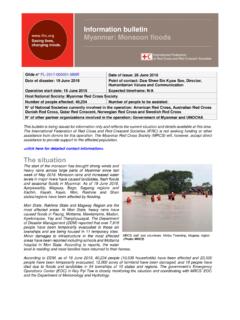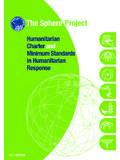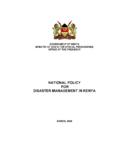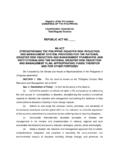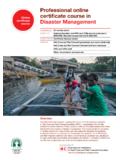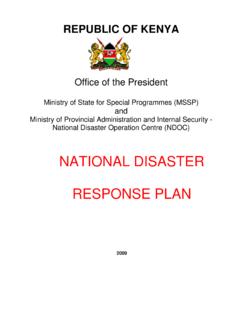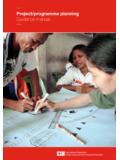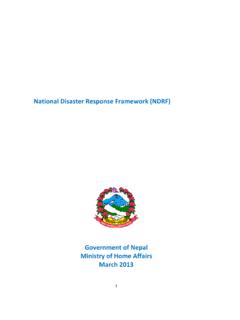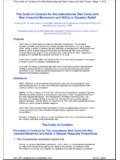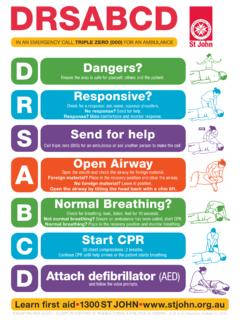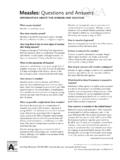Transcription of Law and first aid - ifrc.org
1 Law and first aid Promoting and protecting life-saving action International Federation of Red Cross and Red Crescent Societies, Geneva, 2015 Copies of all or part of this study may be made for non-commercial use, providing the source is acknowledged. The International Federation would appreciate receiving details of its use. Requests for commercial reproduction should be directed to the International Federation at opinions and recommendations expressed in this study do not necessarily represent the official policy of the International Federation of Red Cross and Red Crescent Societies or of individual National Red Cross or Red Crescent Societies. The designations used do not imply the expression of any opinion on the part of the International Federation or National Societies concerning the legal status of a territory or of its photo: CPR demonstration in Indonesia IFRC/Vina AgustinaFor more information, please contact: International Federation of Red Cross and Red Crescent Box 372CH-1211 Geneva 19 SwitzerlandTelephone: +41 22 730 42 56 Fax: +41 22 730 49 29 Email: the International Federation of Red Cross and Red Crescent SocietiesThe International Federation of Red Cross and Red Crescent Societies (IFRC) is the world s largest volunteer-based humanitarian network.
2 Together with our 189 member National Red Cross and Red Crescent Societies worldwide, we reach 97 million people annually through long-term services and development programmes as well as 85 million people through disaster response and early recovery programmes. We act before, during and after disasters and health emergencies to meet the needs and improve the lives of vulnerable people. We do so with impartiality as to nationality, race, gender, religious beliefs, class and political opinions. Guided by Strategy 2020 our collective plan of action to tackle the major humanitarian and development challenges of this decade we are committed to saving lives and changing minds .Our strength lies in our volunteer network, our community-based expertise and our independence and neutrality. We work to improve humanitarian standards, as partners in development and in response to disasters. We persuade decision-makers to act at all times in the interests of vulnerable people. The result: we enable healthy and safe communities, reduce vulnerabilities, strengthen resilience and foster a culture of peace around the Federation of Red Cross and Red Crescent SocietiesLaw and first aidPromoting and protecting life-saving actionFirst aid is a proven, cost-effective measure to save lives.
3 Widespread training and education in first aid can improve the chances that someone is close at hand who is able and willing to provide the necessary intervention in the first moments after an injury or other sudden health crisis, avoiding death by delay pending the arrival of more highly trained health professionals. Nevertheless, lawmakers have traditionally paid relatively little attention to first aid provided by laypeople. From country to country, there is enormous variety as to whether and how first aid training and delivery is promoted and regulated by law, with important gaps in many countries. This report highlights three areas in which stronger legislation related to first aid may contribute to saving more lives. It draws on an extensive review of current medical and grey literature, several surveys of first aid experts from National Red Cross and Red Crescent Societies around the world, and a study of the laws of 37 sample countries.
4 first , it is recommended that first aid training be made mandatory in certain cir-cumstances. One of these is in schools. It goes without saying that parents every-where expect schools to do their best to ensure the safety of their children. However, many countries do not require teachers or school personnel to have first aid training. Perhaps more important, studies have shown that children themselves, even at quite a young age, are capable of learning and applying aspects of first aid. Moreover, they are well placed to learn and to receive training and in particular refresher sessions to cement their knowledge. Yet, only a minority of the countries examined required first aid training for students. Another opportunity relates to driver s license applicants. Countries that have in-stituted mandatory first aid training requirements for applicants have seen dra-matically higher permeation of first aid knowledge in their populations compared to those that have not.
5 Moreover, road traffic accidents make up the largest proportion of unintentional injury deaths in the world and other drivers are often those closest at hand when they occur. Countries in Europe have gone farthest in this respect, though even there about a fourth of countries have no mandatory requirements. The most common type of first aid training requirement around the world is related to occupational safety and health rules. Evidence has shown that workplace first aid training not only saves lives in situations of crisis but also enhances participants motivation to avoid occupational injuries and illnesses in the first place and im-proves their risk control behaviour. Even here, however, the picture is mixed. Some countries do not impose first aid training as part of their occupational and health approach, and some that do have such rules lack the institutional infrastructure for enforcement. A second issue raised by this report goes to the quality of first aid education.
6 As may be expected, studies confirm that correctly performed first aid is much more likely Executive summary2 International Federation of Red Cross and Red Crescent SocietiesLaw and first aidPromoting and protecting life-saving actionto save lives than clumsier attempts. Yet, very few states examined for this report had any official guidelines or standards for the minimum quality of content of first aid courses. Finally, the report points to the issue of liability of lay first aiders. Studies in the lit-erature and the surveys of Red Cross and Red Crescent first aid experts have shown that bystanders are frequently very reluctant to provide assistance in situations of crisis, and one of the reasons is a fear of legal entanglement. In some countries, this fear is clearly justified in light of a substantial number of cases where victims or the state have brought action against persons who tried unsuccessfully to intervene. While some countries provide explicit protections against liability for those who try to help in such situations, this is not the case everywhere else.
7 Moreover, even in some countries where protections do exist, they are not well known (or believed) in the population. Of course, mistakes can and do happen, but society is much better served by encouraging people to help than increasing a personal sense of risk among those who might be in a position to save a life. Accordingly, the report recommends that states expressly provide for protection against liability for the good faith efforts of lay first Federation of Red Cross and Red Crescent SocietiesLaw and first aidPromoting and protecting life-saving actionTable of contentsAcknowledgments 4 Sources for this report 5 Introduction 6I. Background 6A. The case for first aid 6B. What are the barriers to saving more lives through first aid? 7II. Mandating first aid training in certain circumstances 8A.
8 first aid training in schools 9B. first aid training of driver s licence applicants 12C. Workplace first aid mandates 13 III. Standards for first aid training 16IV. Protection from liability 19 Conclusion and recommendations 23 Endnotes 244 International Federation of Red Cross and Red Crescent SocietiesLaw and first aidPromoting and protecting life-saving actionAcknowledgmentsThis report was commissioned by the International Federation of Red Cross and Red Crescent Societies Disaster Law Programme and Global first Aid Reference Centre. Substantial drafting and research support were provided by Jeffrey Pellegrino, Paulo Cavaleri and David Fisher, with editorial oversight from Pascal Cassan and Diane Issard and additional research by Mireille Le Ngoc. The international law firm of CMS Cameron McKenna organized a substantial sur-vey of relevant laws in 37 countries on a pro bono basis as a contribution to the project.
9 Funding for other aspects of the project was provided by the Government of Switzerland. The IFRC is very grateful for their Federation of Red Cross and Red Crescent SocietiesLaw and first aidPromoting and protecting life-saving actionSources for this reportThis report compiles findings from an extensive desk review of the medical and grey literature on first aid education and policy, previous research undertaken by the IFRC, as well as several research initiatives undertaken especially for this report and interviews with Red Cross and Red Crescent first aid previous IFRC research includes a study on first aid practice in Europe published in 2009,1 an extended version of that report with a more global scope published in 2010,2 the results from a 2013 IFRC Global first Aid Reference Centre survey of first aid focal points from 77 National Red Cross and Red Crescent Societies as well as qualitative information gained from IFRC-hosted meetings of first aid education managers from around the Movement in 2014-15.
10 With regard to the new research, in 2014, the IFRC Disaster Law Programme com-missioned the law firm of CMS Cameron McKenna to examine laws in 37 countries, distributed amongst global regions (Africa, Americas, Asia & Pacific, Europe, and the Middle East/ Northern Africa) to gather extensive information about problems deriv-ing from legal gaps in first aid (hereinafter, the CMS Cameron McKenna Study ).3 Moreover, in 2015, the IFRC Global first Aid Reference Centre undertook a follow-up survey of National Society first aid focal points, receiving 93 responses as of the time this report was completed. Figures 1 and 2 below describe the geographic coverage of the CMS Cameron McKenna Study and of the responses to the 2013 and 2015 Reference Centre 1 CMS Cameron McKenna Study, 2014 Countries Studied78886 AfricaAmericasAsia & PacificEuropeMENAF igure 2 Reference Centre Surveys20132014 AfricaAmericasAsia & PacificEuropeMENAR esponses142034811417421736 International Federation of Red Cross and Red Crescent SocietiesLaw and first aidPromoting and protecting life-saving actionIntroductionThere are many mysteries surrounding our health.
